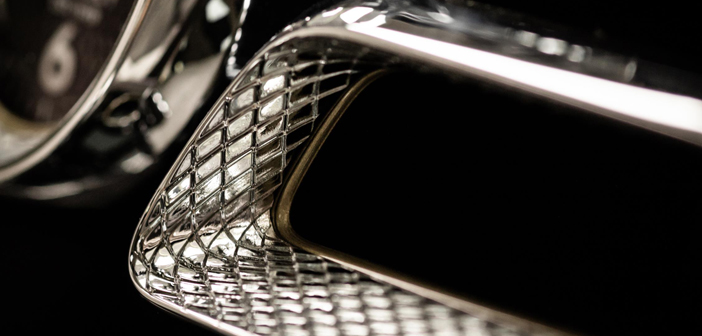Bentley has revealed more details of its Diamond Knurling Specification for the new Flying Spur sedan, which sees traditional craftsmanship brought into the digital era through the application of state-of-the-art technology.
Bentley’s design and engineering teams overcame a series of unprecedented challenges to create the unique look and feel of the ‘facet knurling’ that adorns the surfaces of the Flying Spur’s front console vents – which incorporate some 5,331 individual diamond shapes alone – as well as the B-pillar and rear console vents.
For the first time, cutting-edge parametric design software, more usually deployed in the architectural world, was used to create a series of computer-generated algorithms that allowed the designers to apply the incredible detail of the diamonds to surfaces that were constantly changing in dimension and curvature.
At the same time, a new production process was introduced that delivered a level of fine detail and finishing unlike anything previously seen, effectively producing a form of jewellery from a tool, Bentley says. Such was the complexity of the work required, with no compromise in terms of the quality and finish of the metal knurling, that more than 20 of the world’s leading component suppliers asserted it to be impossible.
Brett Boydell, head of interior design for the Flying Spur, commented, “We were looking to break new ground with the new Flying Spur through a progressive, no-compromise approach to every aspect of the project. We have embraced the use of the latest technology to ensure that not only the Flying Spur, but all future Bentleys, are at the cutting edge of what is possible.”
The Diamond Knurling process started with the design team’s decision to incorporate more artistic and sculptured air vents in the front centre console, and to apply the facet knurling from the ‘bullseye’ air vents and other rotary switches across the curves of the new components.
With knurling traditionally featuring on relatively easily produced cylindrical-shaped components, the decision meant a completely new challenge in terms of both design and manufacturing feasibility. Creating the models using conventional CAD software would not allow the diamond patterns to wrap seamlessly around the sculpture without the shapes becoming unacceptably distorted.
Bentley teamed up with leading UK-based automotive design company Astheimer to develop the algorithms that would make it possible. Through the use of innovative parametric software, which is employed to automate the generation of complex 2D and 3D design details, Astheimer “captured traditional craftsmanship by encoding Bentley’s brand DNA into algorithms that could be reused elsewhere”, according to the car maker.
For the engineering team, the complexity of the design meant that the tooling needed to manufacture the components had to not only be able to reproduce the extremely small diamond shapes – each one rotated to expose edges of just 0.3mm – but to the quality and finish expected of a Bentley.
Previously, metal components were finished, polished and chromed separately, however the intricate detailing of the diamond knurling made this impossible. A special molding tool had to be developed to create the parts in perfect condition in one operation.
As a result, in addition to the 5,331 individual diamond shapes perfectly cut into the front console vent, a further 3,500 and 1,800 diamonds are incorporated into the rear vent and each individual B-pillar vent respectively.



